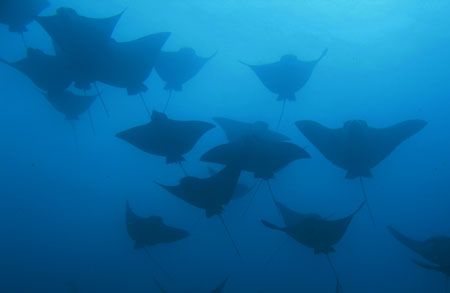
Bioroboticists at the University of Virginia have built themselves a robotic cow-nosed ray. Why? Because they can. Also, because rays are great at what they do, and if we can copy all their tricks to make better underwater robots, we absolutely should.
It’s no coincidence that all the coolest UAVs look just like rays. The form factor that was invented by batoidea eons ago is advantageous for a number of reasons common across fluids including both air and water, including high efficiency, good maneuverability, speediness, and lots of payload space. In other words, according to the UVA researchers, rays are “wonderful examples of optimal engineering by nature.”
UVA’s bioengineers aren’t the first roboticists to have noticed how awesome the ray is at being all ray-like. Festo, which knows a thing or two about robots inspired by nature, made both aerial and aquatic versions of rays that are quite acrobatic. What UVA is doing differently, however, is focusing on all the subtle ways that aquatic rays can control themselves, with the idea of developing an underwater robot that can do the same thing: http://www.youtube.com/watch?v=n66N7Xkxazc&feature=player_embedded
Making turns like that is an ability completely unique to the ray design, and it’s a great illustration of why bioroboticists are so interested in getting all the details right. The body of the roboray is made of plastic, while the wings are made of silicon stuffed with rods and cables that expand and contract to causes the wing to change shape in ways that are modeled directly on observations of live rays.
The end goal here is an autonomous underwater vehicle that will be able to silently blend in with other sea creatures, carrying environmental monitoring payloads or possibly spy gear for the military.
Source: http://spectrum.ieee.org/automaton/robotics/military-robots/mantabot
